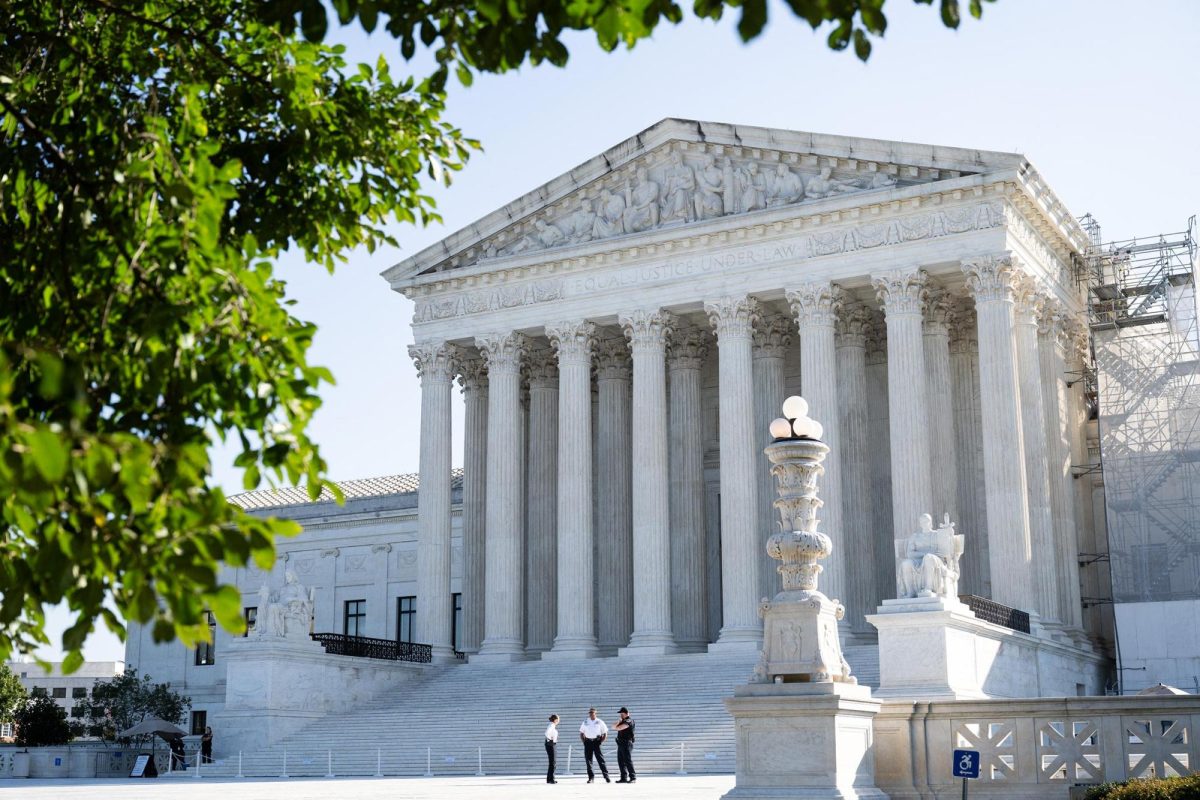CEDAR KEY, Fla. (AP) — Hurricane Idalia made landfall Wednesday in Florida as a Category 3 storm and unleashed devastation along a wide stretch of the Gulf Coast, submerging homes and vehicles, turning streets into rivers, unmooring small boats and downing power lines in an area that has never before received such a pummeling.
More than 330,000 customers in Florida and Georgia were without electricity while rushing water covered streets near the coast. As the eye moved inland, high winds shredded signs, sent sheet metal flying and snapped tall trees.
“We have multiple trees down, debris in the roads, do not come,” posted the fire and rescue department on the island of Cedar Key, where a tide gauge measured the storm surge at 6.8 feet (2 meters) — enough to submerge most of the downtown. “We have propane tanks blowing up all over the island.”
Idalia came ashore in the lightly populated Big Bend region, where the Florida Panhandle curves into the peninsula. It made landfall near Keaton Beach at 7:45 a.m. as a high-end Category 3 hurricane with maximum sustained winds near 125 mph (205 kph).
RJ Wright stayed behind on Cedar Key so he could check on elderly neighbors. He hunkered down with friends in a motel and when it was safe, walked outside into chest-high water. It could have been a lot worse for the island, which juts into the Gulf, since it didn’t take a direct hit, he said.
“It got pretty gnarly for a while, but it was nothing compared to some of the other storms,” Wright said.
The system remained a hurricane as it crossed into Georgia with top winds of 90 mph (150 mph), after drenching Florida mostly to the east of Tallahassee. Forecasters said it would punish the Carolinas overnight as a tropical storm.
Some models had predicted that Idalia could circle southward toward land again after that, but the National Hurricane Center predicted it would move deeper into the Atlantic this weekend.
In the town of Perry, the wind blew out store windows, tore siding off buildings and overturned a gas station canopy. Interstate 275 in Tampa was partially flooded, and toppled power lines closed northbound Interstate 75 just south of Valdosta, Georgia.
About 200 miles to the south of where Idalia made landfall, the roads around the chic shops and restaurants of St. Armands Circle in the Sarasota area were underwater.
Astounded by the flooding that turned Tampa’s Bayshore Boulevard into a river, Bill Hall watched a paddleboarder ride along the major thoroughfare.
“This is actually unbelievable,” Hall said. “I haven’t seen anything like this in years.”
In Tallahassee, Florida’s capital city, the power went out well before the center of the storm arrived.
Tallahassee Mayor John Dailey urged everyone to shelter in place. Florida residents living in vulnerable coastal areas had been ordered to pack up and leave as Idalia gained strength in the warm waters of the Gulf of Mexico.
“Don’t put your life at risk by doing anything dumb at this point,” Gov. Ron DeSantis said Wednesday at a news conference. “This thing’s powerful. If you’re inside, just hunker down until it gets past you.”
Storm surge could rise as high as 16 feet (4.9 meters) in some places. Some counties implemented curfews to keep residents off roads.
Diane Flowers was sound asleep at 1 a.m. Wednesday in her Wakulla County home, but her husband was up watching the weather on TV when he got a text from their son after the storm was upgraded to a Category 4. He’s a firefighter/EMT in Franklin County, which is also along the Gulf Coast.
“He said, ‘You guys need to leave,’” Flowers said. “And he’s not one for overreacting, so when he told us to leave, we just packed our stuff, got in our car and got going.”
They quickly packed a few clothes, medicine, food for their two border collies, a computer, important documents and a bag of Cheetos. Motels were packed all the way into Alabama, where they ended up finding a room in Dothan.
The National Weather Service in Tallahassee called Idalia “an unprecedented event” since no major hurricanes on record have ever passed through the bay abutting the Big Bend. The state, still dealing with lingering damage from last year’s Hurricane Ian, feared disastrous results.
Not everyone heeded the warnings to leave, and Hernando County Sheriff Al Nienhuis said authorities couldn’t guarantee rescues for people who didn’t evacuate, since coastal roads would only get more flooded as high tide pushes more water inland.
“It’s going to do nothing but go up from here,” Nienhuis, whose county is north of the Tampa area, said Wednesday.
Idalia grew into a Category 2 system on Tuesday and then a Category 3 storm on Wednesday before peaking as a Category 4 hurricane. It then weakened slightly.
Tolls were waived on highways out of the danger area and shelters were opened. More than 30,000 utility workers were gathering to make repairs as quickly as possible in the hurricane’s wake. About 5,500 National Guard troops were activated.
Both Georgia Gov. Brian Kemp and South Carolina Gov. Henry McMaster announced states of emergency, freeing up state resources and personnel, including hundreds of National Guard troops.
As he finished tying down about 20 sailboats and motor yachts docked on Wilmington Island east of Savannah, Georgia, Brandon Long said his biggest worry was that the storm surge was forecast to coincide with a higher-than-normal tide.
“If these docks float off their pylons or come apart because of the violent current and the choppy waters, then that’s what destroys a marina,” said Long, owner of the Bull River Marina.
Asked about the hurricane Tuesday, President Joe Biden said he had spoken to DeSantis and “provided him with everything that he possibly needs.”
Ian was responsible last year for almost 150 deaths. That Category 5 hurricane damaged 52,000 structures, nearly 20,000 of which were destroyed or severely damaged.
The National Oceanic and Atmospheric Administration recently said the 2023 hurricane season would be far busier than initially forecast, partly because of extremely warm ocean temperatures. The season runs through Nov. 30, with August and September typically the peak.
Associated Press writers Brendan Farrington in Tallahassee, Florida; Mike Schneider in St. Louis, Missouri; Marcia Dunn in Cape Canaveral, Florida; Curt Anderson in Orlando, Florida; Chris O’Meara in Clearwater, Florida; Cristiana Mesquita in Havana; Russ Bynum in Savannah, Georgia; Jeffrey Collins in Columbia, South Carolina; Seth Borenstein in Washington; Kathy McCormack in Concord, New Hampshire; Tara Copp in Washington; and Julie Walker in New York contributed to this report.




